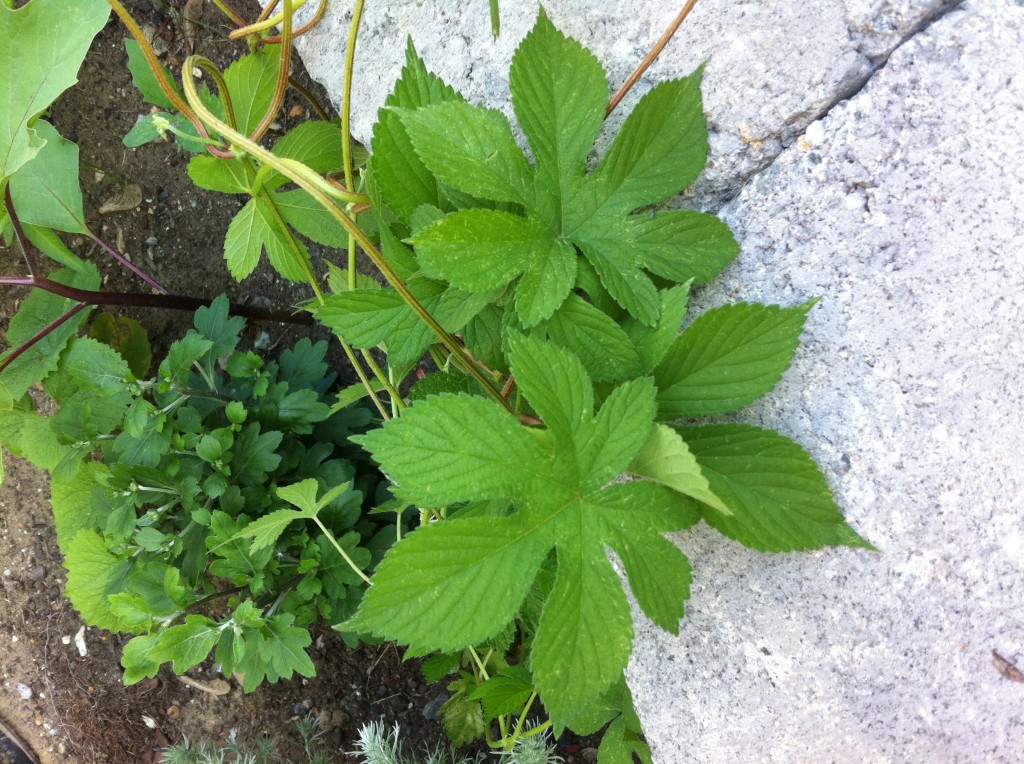Erin Luchsinger Hull
This issue’s guest expert Erin Luchsinger Hull, a fourth generation farmer in Onondaga County, where she works as a general agriculture educator for Cornell Cooperative Extension.
Q: I found this vine in my garden. What is it?
A: The vine you found is Japanese hops, Humulus japonicus, an extremely invasive and noxious weed. It is an annual not used in beer production, and it should never be intentionally planted.
Humulus lupulus, on the other hand, is an extremely useful plant that many dearly love—and this is the kind of hops for making beer.
Humulus lupulus = good
Here’s an easy way to tell them apart: common hops leaves have three lobes or none, while Japanese have five, seven, or nine.
In the 1880s, 80% of all hops produced in the United States were grown in central New York, but plant diseases and prohibition caused the region to lose its foothold to the Pacific Northwest.
Hops do very well in our climate. They require a lot of water and are prone to powdery mildew, which thrives in moist areas with little air movement. The easiest way to prevent it is to strip the lower leaves from the plant and keep weeds down.
If you plan to grow hops, be prepared. They grow tall and they grow fast. Hops can easily grow to heights in excess of 20′ and poles or trellises should be sized accordingly.
Views: 3









